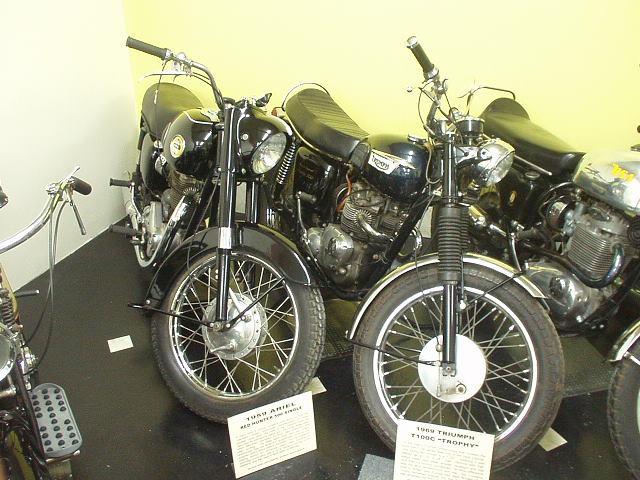Title: Exploring the Timeless Soundscapes of Vintage Synth Explorer
In the ever-evolving landscape of music technology, the allure of vintage synthesizers endures, captivating the hearts of musicians, producers, and audiophiles alike. Enter ”Vintage Synth Explorer,” a dedicated platform that serves as both a nostalgic sanctuary and an invaluable resource for those passionate about these iconic instruments. From the lush, analog warmth of the Moog to the sharp, digital precision of the Yamaha DX7, the website delves deep into the stories, specifications, and soundscapes of synthesizers that have shaped the musical landscape over the decades. Whether you are a seasoned synth aficionado or a curious newcomer eager to navigate the rich tapestry of electronic sound, Vintage Synth Explorer offers a compelling journey through the history, heritage, and endless creativity that vintage synthesizers embody. Join us as we explore the sonic legacies that continue to inspire new generations of artists and enthusiasts.
Rediscovering the Timeless Sound of Vintage Synths
The resurgence of vintage synthesizers has sparked a wave of creativity among musicians and producers alike, bridging the gap between nostalgic sounds and modern sonic exploration. Analog warmth and uniqueness are hallmarks of these instruments, which made their mark in the music scene from the 1960s through the 1980s. As artists seek to recreate the captivating textures synonymous with classic tracks, many are turning to these machines, not just for their sound but also for the tactile experience they provide. Whether it’s the thick, lush pads of a Roland Juno-106 or the iconic bass lines of a Minimoog, the charm of these synthesizers lies in their imperfections and quirks, which often evoke emotion and inspire new compositions.
In the realm of music production, the versatility of vintage synths extends beyond mere nostalgia. These instruments have become a staple in various genres, from electronic and hip-hop to pop and rock. Modern artists are increasingly incorporating vintage sounds into their work through both hardware and software emulations. Below is a table showcasing a few legendary synths that continue to inspire today’s music makers:
| Synthesizer | Year Released | Notable Features |
|---|---|---|
| Minimoog Model D | 1970 | Fat bass tones, easy-to-use interface |
| Roland Juno-106 | 1984 | Editable chorus, rich string sounds |
| Korg MS-20 | 1978 | Patchable, distinctive filter sounds |
| Pioneer DJM-909 | 2002 | Digitally controlled, versatile effects |
This newfound appreciation for vintage synthesizers not only revives sounds from the past but also adds to the richness of contemporary music. As musicians experiment and innovate with these classic tools, they are not just recreating history but also building upon it, ensuring that the legacy of vintage synths continues to evolve in exciting new directions.Vintage Landscape Mural WallpaperAir Compressor VintageArched Vintage Mirror
Navigating the Vintage Synth Market: Tips for Enthusiasts
To navigate the vibrant yet complex world of vintage synthesizers, enthusiasts should start by educating themselves about the different types and brands available. Many classic models have unique sound signatures and features that cater to specific music genres. Researching key characteristics such as oscillators, filters, and modulation options can help you identify what you’re looking for. Additionally, familiarizing yourself with iconic brands like Moog, Roland, and Korg can guide you towards a worthwhile purchase. Don’t hesitate to check out online forums, synth communities, and local meetups to connect with other enthusiasts who can provide invaluable insights and personal experiences.
When it comes to making a purchase, the condition and history of the synth are paramount. It’s wise to look for trusted sellers with a good reputation, as many vintage synths can be sensitive and may require specific care. Before sealing the deal, consider these important factors:
- Documentation: Look for original manuals or service records.
- Testing: Always test the synth in person if possible to ensure it functions correctly.
- Modifications: Be cautious of heavily modified units, as they may lose their original value and sound quality.
Lastly, tracking current market trends is essential. While some models may spike in value due to hype, others may become undervalued gems ripe for acquisition. Joining mailing lists or following relevant social media channels can keep you in the loop. Consider these helpful resources:
| Synth Model | Average Price | Market Trend |
|---|---|---|
| Roland Juno-106 | $1,200 | Increasing |
| Korg MS-20 | $900 | Stable |
| Moog Minimoog Model D | $3,000 | Increasing |
Essential Vintage Synths for Every Collection
Diving into the world of vintage synthesizers opens up a realm of iconic sounds and unique craftsmanship that can elevate any music collection. First on your must-have list is the Roland Juno-106. Recognized for its lush, warm tones and user-friendly interface, this synth has become a staple in both electronic and pop music. Not far behind, the Moog Minimoog Model D deserves a spot; famed for its rich bass and powerful leads, it continues to influence countless artists today. Lastly, the Korg MS-20 is a must-have thanks to its distinctive dual filter system and patch bay, allowing for unparalleled experimental sound design.
To help streamline your collection decisions, here’s a quick comparison table of key features of these essential vintage synthesizers:
| Synthesizer | Year Released | Key Features |
|---|---|---|
| Roland Juno-106 | 1984 |
|
| Moog Minimoog Model D | 1970 |
|
| Korg MS-20 | 1978 |
|
Exploring Iconic Models: Legends of the Analog Era
In the realm of synthesizers, certain models have transcended their original purpose to become legends, revered not only for their unique sounds but also for their role in shaping the music landscape of their time. From the moody depths of the Moog Voyager to the vibrant textures of the Roland Jupiter-8, these machines have become synonymous with iconic tracks and genres. Musicians, producers, and enthusiasts alike still seek to capture the essence of these analog wonders, which boast a tactile interface and warmth that digital instruments often struggle to replicate.
Each of these legendary models has its distinct personality, making them coveted treasures for collectors and sound designers. A few notable mentions include:
- Moog Minimoog: A staple in early electronic music.
- Roland TR-808: Famous for its punchy bass drum and snares.
- Korg MS-20: Known for its semi-modular architecture.
For a deeper dive into these synths, here’s a quick overview of their key features:
| Model | Year Released | Key Features |
|---|---|---|
| Moog Minimoog | 1970 | 3 oscillators, built-in sequencer |
| Roland TR-808 | 1980 | Analog drum machine, distinctive kick sound |
| Korg MS-20 | 1978 | Patchable, dual-filter setup |
Preserving and Maintaining Your Vintage Instruments
Maintaining your vintage instruments requires a careful balance of reverence and practicality. Start by ensuring the environment where your synths are stored is optimal. Consider these essential factors:
- Temperature: Keep instruments in a stable climate, ideally between 65°F and 75°F (18°C – 24°C).
- Humidity: Aim for 40%-60% humidity to prevent warping or corrosion of internal components.
- Dust Protection: Use soft covers or cases to shield from dust, which can degrade their functionality over time.
Regular maintenance routines are crucial for preserving the audio integrity and structural condition of vintage synths. Create a checklist to follow that includes:
- Circuit Checks: Open up your synth occasionally to inspect and clean dust from circuit boards.
- Potentiometer Cleaning: Use contact cleaner on pots to avoid scratchy sounds and ensure smooth operation.
- Tuning Calibrations: Periodically check the tuning and timing specifications to keep your instrument sounding its best.
| Maintenance Task | Frequency |
|---|---|
| Visual Inspection | Monthly |
| Pots Cleaning | Biannually |
| Full Calibration | Annually |
The Community Connection: Finding Fellow Synth Lovers
The world of vintage synths is not just a realm of knobs and oscillators; it’s a vibrant community of passionate enthusiasts. Connecting with fellow synth lovers can elevate your experience beyond mere ownership to shared exploration and inspiration. Here are some ways to cultivate these connections:
- Join Online Forums: Platforms like Gearslutz and Synthtopia host lively discussions that can help you connect with other synth aficionados.
- Social Media Groups: Look for Facebook groups or subreddits dedicated to vintage synths, where you can share your finds or seek advice.
- Local Meetups and Synth Expos: Attend events in your area to meet like-minded individuals and discover hidden treasures in the synth world.
To encourage collaborative projects, consider setting up a local music collective. By pooling your resources and knowledge, you can help each other with synth repairs, share rare models, or even host jam sessions. Here’s a simple structure to get your group started:
| Action | Goal |
|---|---|
| Host Monthly Meetups | Discuss latest finds, and collaborate on music projects. |
| Share Synthesis Techniques | Expand your skills and creativity together. |
| Organize a Synth Swap | Exchange gear and discover new sounds. |
Q&A
Q&A: Exploring the World of Vintage Synth Explorer
Q1: What is Vintage Synth Explorer?
A1: Vintage Synth Explorer (VSE) is a comprehensive online resource dedicated to synthesizers and electronic music instruments from the past. It hosts an extensive database of vintage synths, allowing enthusiasts and musicians to dive deep into the specifications, sounds, and history of these iconic devices.
Q2: Who is the primary audience for Vintage Synth Explorer?
A2: The primary audience includes musicians, sound designers, collectors, and synth aficionados who have a penchant for retro gear. It caters to both seasoned veterans and newcomers intrigued by the unique sounds of vintage synthesizers.
Q3: What kind of information can users find on the site?
A3: Users can find detailed listings of synth models, including photographs, specifications, sound examples, user reviews, and historical context. The site also features articles, forums, and a vibrant community where users can exchange tips, patch ideas, and experiences.
Q4: How does Vintage Synth Explorer help users in their music-making journey?
A4: VSE serves as a valuable tool for music-making by offering insights into different synth models, enabling users to understand their sonic potential. Whether one is searching for inspiration related to a specific sound or considering purchasing a vintage synth, the platform provides essential information and resources.
Q5: Can visitors contribute to Vintage Synth Explorer?
A5: Absolutely! VSE encourages community involvement. Users can submit their own reviews, share personal stories, and even contribute information about lesser-known synthesizers. This collaborative approach enriches the database and helps keep the vintage synth culture alive.
Q6: Are there any standout features on the website?
A6: Yes, one standout feature is the user-friendly interface, which allows for easy navigation through the synth database. Additionally, the “Soundcloud Demos” section offers audio clips that showcase synth sounds, providing a practical way for users to hear the instruments in action before making decisions.
Q7: What makes Vintage Synth Explorer unique compared to other synth-related sites?
A7: Vintage Synth Explorer distinguishes itself with its dedicated focus on vintage instruments, its rich historical context, and active community engagement. It’s more than just an encyclopedia; it’s a hub for passionate discussions and shared knowledge, elevating the entire vintage synth experience.
Q8: How can beginners get started with Vintage Synth Explorer?
A8: Beginners can start by exploring the “Synthesis 101” section, which offers articles and tutorials about different synthesis methods and techniques. From there, they can browse through the curated synth lists to discover iconic models and their unique characteristics. Engaging with the community forums can also help broaden their understanding and spark new ideas.
Q9: What role does Vintage Synth Explorer play in preserving the history of synthesizers?
A9: VSE plays a vital role in preserving synthesizer history by documenting the evolution of these instruments, sharing anecdotes, and ensuring that the stories of iconic models are not lost. By maintaining an accessible archive, it celebrates the rich legacy of electronic music and the innovators behind the scenes.
Q10: How can users stay updated on new arrivals and site developments?
A10: Users can sign up for the Vintage Synth Explorer newsletter or follow their social media channels to stay informed about the latest synth additions, community events, and exclusive content. Engaging with the platform on social platforms also fosters connections with other synth lovers and enthusiasts.
Discover the past, embrace the sounds, and reconnect with the magic of vintage synthesizers through Vintage Synth Explorer – where every key tells a story!
Wrapping Up
As we conclude our exploration of Vintage Synth Explorer, it’s clear that this digital sanctuary serves as more than just a repository of synthesizers; it’s a vibrant community that celebrates the nostalgia and innovation behind electronic music. Whether you’re a seasoned musician seeking the perfect vintage sound, a curious newcomer drawn by the allure of retro technology, or simply an enthusiast who appreciates the craftsmanship of bygone eras, Vintage Synth Explorer invites you to dive deeper into its rich archives. With every synth that graces its pages, we are reminded of the artistry and passion that fuels the electronic landscape. So, as you continue your journey through the world of synthesizers—both past and present—let the echoes of these iconic instruments inspire your own sonic creations. Happy exploring!


